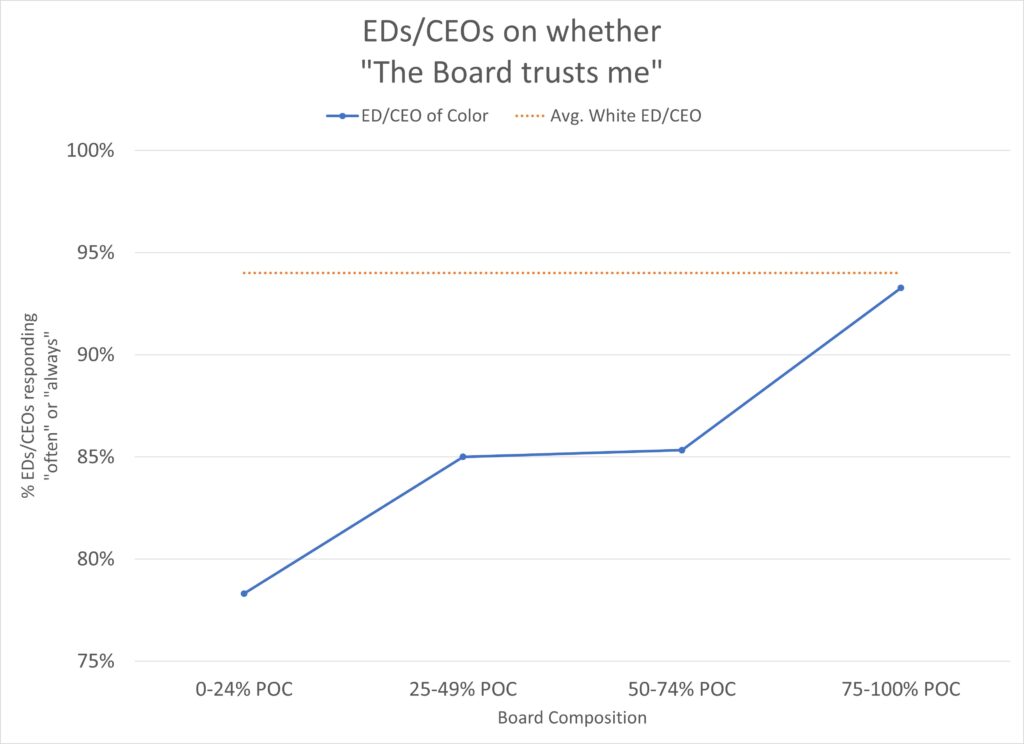Apr
11
2022
Written by Sean Thomas-Breitfeld (Co-Executive Director)
Over the past six years of our Race to Lead initiative, I’ve been curious about how we measure progress towards making nonprofits and our sector more equitable. Keeping in mind the many think-pieces on the differences between diversity and equity, focusing on measurement often feels inadequate because it defaults to a diversity frame. But the concepts of “tipping points” and “critical mass” can be useful links between diversifying the racial composition of a group or organization, and accelerating organizational or sectoral equity.
Malcolm Gladwell’s first best-selling book – The Tipping Point: How Little Things Can Make a Big Difference – used his now-signature way of weaving academic research (drawn from the fields of psychology and sociology) with real-world examples (drawn from marketing and pop culture) to show how small numbers of people can drive change.
The need for change in nonprofit boards is clear. Our colleagues at BoardSource found through their latest Leading with Intent report that the majority of nonprofit board members are white, and four out of five nonprofit boards are at least 60% white. In our February webinar on the “Trading Glass Ceilings for Glass Cliffs” report, Karundi Williams from re:power talked about the importance of “transitioning people off your board” and defining the board “makeup that will actually support the work” and vision of new leaders of color.
BMP’s own data from EDs/CEOs who responded to our 2019 Race to Lead survey suggests that having people of color make up at least 25% of a nonprofit’s board can be a tipping point.
When we asked EDs/CEOs how often their organization’s “board trusts me,” the responses were positive overall; 86% of EDs/CEOs of color reported that they “often” or “always” have their board’s trust, compared to 94% of white EDs/CEOs. But as the figure below shows, EDs/CEOs of color leading organizations with the least diverse boards were less likely to report that their board often/always trusts them. Trust plateaued for EDs/CEOs leading organizations where one-quarter to half and one-half to three-quarters of board members were people of color. But this level of trust was still lower than what white EDs/CEOs reported.
Only EDs/CEOs of color whose boards were more than three-quarters people of color reported that their “board trusts me” at the level of white EDs/CEOs.

Other research suggests similar thresholds for board diversity bring real benefits.
According to Moody’s (the credit-rating company), companies with more women on their boards tend to have higher credit ratings. The tipping point for the proportion of women on boards that moves a company from negative to good corporate governance is somewhere between 21% and 35%.
Academics in Canada found the relationship between diversifying boards and improving board performance was not the straight, upward line we often imagine. Challenging the idea of a single “tipping point,” their data on nonprofit boards pointed to multiple nuanced “inflection points.”
The researchers explained how a hypothetical 12-member board would first see slight declines in fiduciary oversight, stakeholder engagement, etc., when the first person of color was added to an otherwise all-white board. But then boards reaped more benefits as they passed the point of “critical mass” – around 20% people of color, or two people on a 12-person board. Their research concludes that when more than 67% of a board’s members are people of color the board had declines in performance, “reverting to a new homogeneity or alternatively to fragmentation, where the difficulties of integration exceed the benefits of diversity.”
The practical lesson to draw from the range of research and data is that diversifying boards one-by-one delays reaching the tipping points where board diversity enhances the relationship with EDs/CEOs of color and success of boards in carrying out their governance responsibilities.
As the new wave of executive transitions approaches the nonprofit sector, more leaders of color will have to take on board transformation as a critical first step towards success in their roles and making their organizations more equitable. Some foundations signal the importance of board diversity through grant applications that ask about the race and gender of board members. This question may encourage more BIPOC board members but we should also normalize that further board shake-ups will happen in the first years of a new leader’s tenure. Rather than see that period of change (and potentially decline in board performance) as cause for alarm, recognize that it’s more likely about building up to a tipping point.

